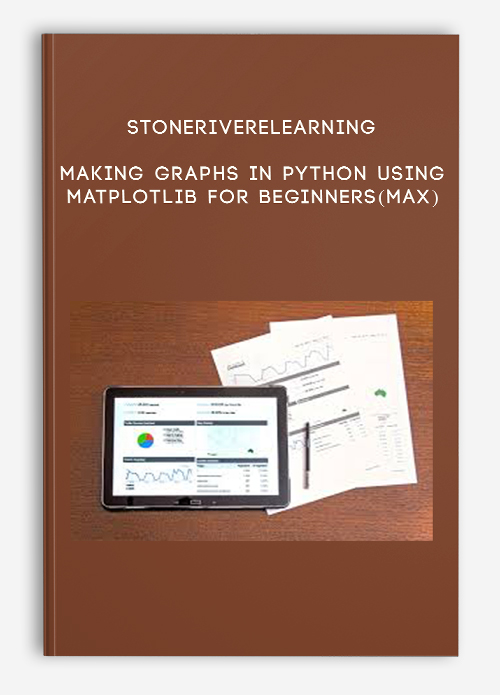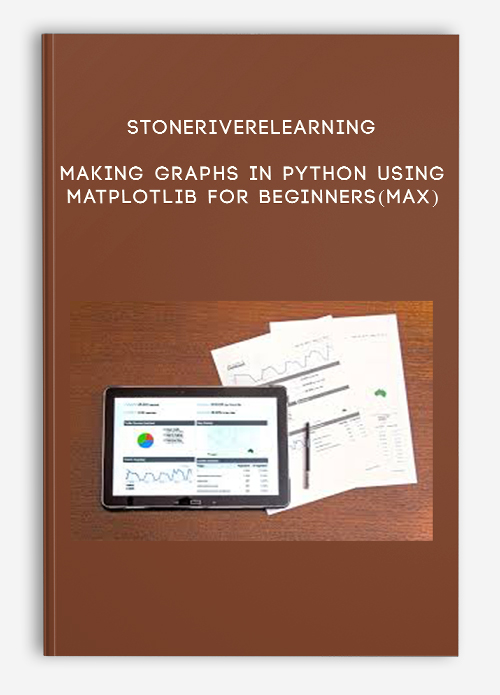Stoneriverelearning – Making Graphs in Python using Matplotlib for Beginners(Max)
$49.00 $25.00
Product Include:
File size:
Stoneriverelearning – Making Graphs in Python using Matplotlib for Beginners(Max)
**More information:
Get Stoneriverelearning – Making Graphs in Python using Matplotlib for Beginners(Max) at Salaedu.com
Description
Data and analytics are becoming increasingly important in our world and in modern day businesses. To start off with data analytics (and ultimately provide nice images of our results), we need to be able to plot our data, preferably in the way we imagine it in our heads.
Matplotlib provides many great plotting opportunities and methods for data visualization, and in this course we will be looking at some introductory methods for getting started with creating plots in Python.
Once we have a starting point for plotting data we can easily expand our knowledge to different areas to make sure we can best represent all of our data.
- Basic Python knowledge
- A Python 3 Environment to Code in
We guarantee that all our online courses will meet or exceed your expectations. If you are not 100% satisfied with a course – for any reason at all – simply request a full refund.
That’s our promise to you. We hate games, gimmicks and tricks as much as you do. We guarantee no hassles if you want a refund, so ahead and order with confidence. You have absolutely nothing to lose.
Course Curriculum
-
Start
Introduction to Matplotlib (2:51)
-
Preview
Importing Libraries in Python (8:40)
-
Start
Dealing with Files in Python (14:18)
-
Start
Making Line and Scatter Plots (14:07)
-
Start
Adding Labels, Titles, Axis Ticks, and Changing Line Styles (9:52)
-
Start
Rotating Axis Ticks, Adding Text and Annotations (7:57)
-
Start
Adjusting Plot Sizes, Adding a Legend, and Saving the Plots (8:33)
-
Preview
Creating 1-Dimensional and 2-Dimensional Histograms (13:42)
-
Start
Changing the Axis Scales (13:27)
Forex Trading – Foreign Exchange Course
Want to learn about Forex?
Foreign exchange, or forex, is the conversion of one country’s currency into another.
In a free economy, a country’s currency is valued according to the laws of supply and demand.
In other words, a currency’s value can be pegged to another country’s currency, such as the U.S. dollar, or even to a basket of currencies.
A country’s currency value may also be set by the country’s government.
However, most countries float their currencies freely against those of other countries, which keeps them in constant fluctuation.
1 review for Stoneriverelearning – Making Graphs in Python using Matplotlib for Beginners(Max)
Add a review Cancel reply
Related products
Forex - Trading & Investment
Forex - Trading & Investment
Options University – Technical Analysis Classes (Video, Manuals)
Forex - Trading & Investment











king –
We encourage you to check Content Proof carefully before paying.“Excepted” these contents: “Online coaching, Software, Facebook group, Skype and Email support from Author.”If you have enough money and feel good. We encourage you to buy this product from the original Author to get full other “Excepted” contents from them.Thank you!